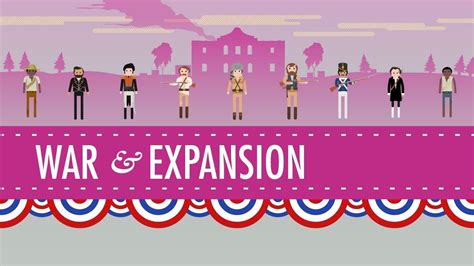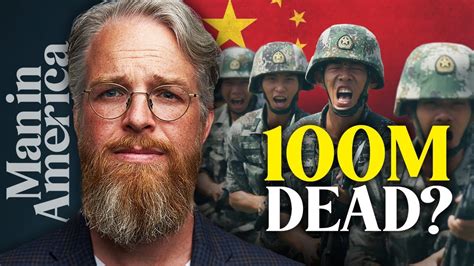
Many of today’s pressing societal issues, from political polarization and economic inequality to debates over immigration and racial justice, have deep roots in American history, with recurring patterns and similar challenges echoing throughout the nation’s past.
The United States, often perceived as a beacon of progress and innovation, grapples with persistent problems that are far from new. Examining key historical moments reveals striking parallels between past struggles and present-day conflicts, demonstrating that the issues dominating headlines are often echoes of earlier battles.
Political Polarization and Divisive Elections
The current climate of intense political division is not unprecedented. The election of 1800, which pitted John Adams against Thomas Jefferson, was marked by vicious personal attacks and partisan rancor. According to Joanne Freeman, a historian at Yale University, “The election of 1800 was nasty, really nasty, and there was a lot at stake.” Accusations of tyranny and atheism flew freely, mirroring the hyperbole often seen in modern political discourse. The contested election of 1876 between Rutherford B. Hayes and Samuel Tilden, which hinged on disputed electoral votes in several Southern states, further underscores the historical precedent for contentious elections and challenges to democratic processes. The resolution of that crisis, through a compromise that effectively ended Reconstruction, had profound and lasting consequences for African Americans.
Economic Inequality and Class Conflict
The widening gap between the rich and poor is a recurring theme in American history. The Gilded Age (late 19th century) saw immense wealth concentrated in the hands of a few industrialists, while many workers struggled to survive. Jacob Riis’s photographs and writings documented the stark contrasts between opulent mansions and overcrowded tenements, exposing the human cost of unchecked capitalism. Labor movements, such as the Knights of Labor and the American Federation of Labor, emerged to fight for better wages, working conditions, and the right to organize. These struggles resonate with contemporary debates about income inequality, the minimum wage, and the power of corporations. The Panic of 1893, a severe economic depression, highlighted the vulnerability of the working class and the instability of the financial system, prompting calls for reform that echo contemporary concerns about economic security and financial regulation.
Immigration Debates and Nativism
Concerns about immigration and its impact on American society are nothing new. The Know-Nothing movement of the mid-19th century, fueled by anti-immigrant sentiment, targeted Irish and German Catholics, fearing their loyalty to the Pope and their supposed threat to American values. The Chinese Exclusion Act of 1882, which barred Chinese laborers from entering the country, reflected similar anxieties about economic competition and cultural differences. These historical examples demonstrate that anxieties about immigration have been a recurring feature of American history, often fueled by economic insecurity and cultural prejudice. The Immigration Act of 1924 further restricted immigration based on national origin, favoring Northern and Western European countries and reflecting a broader nativist agenda.
Racial Justice and Civil Rights
The struggle for racial justice has been a long and arduous one, dating back to the era of slavery. The Dred Scott Supreme Court decision of 1857, which denied citizenship to enslaved people and declared the Missouri Compromise unconstitutional, exacerbated sectional tensions and pushed the nation closer to civil war. Reconstruction, the period after the Civil War aimed at rebuilding the South and integrating formerly enslaved people into society, was met with fierce resistance from white supremacists, who used violence and intimidation to undermine Black political power and maintain racial hierarchy. The Jim Crow laws, which enforced segregation and disenfranchisement in the South, represented a betrayal of the promises of Reconstruction and a continuation of racial oppression. The Civil Rights Movement of the 1950s and 1960s, led by figures like Martin Luther King Jr., sought to dismantle these discriminatory laws and secure equal rights for African Americans. While significant progress has been made, racial inequality persists in areas such as education, housing, employment, and the criminal justice system, underscoring the unfinished work of the Civil Rights Movement.
Foreign Policy and Isolationism vs. Interventionism
The debate over America’s role in the world, particularly the tension between isolationism and interventionism, has been a recurring theme in U.S. foreign policy. George Washington’s Farewell Address warned against entangling alliances, reflecting a desire to avoid European conflicts and focus on domestic development. However, the United States has repeatedly intervened in foreign conflicts, from the Spanish-American War to World War I and World War II. The Vietnam War, a deeply divisive conflict, fueled a resurgence of anti-war sentiment and a questioning of American interventionism. Today, debates over military spending, foreign aid, and intervention in conflicts around the world reflect this ongoing tension between isolationism and interventionism. The Monroe Doctrine, articulated in 1823, asserted American dominance in the Western Hemisphere and warned European powers against further colonization, setting the stage for future interventions in Latin America.
Environmental Concerns and Conservation
Environmental concerns are not a recent phenomenon. The Dust Bowl of the 1930s, caused by over-farming and drought, devastated the Great Plains and forced many farmers to abandon their land. This ecological disaster led to the creation of the Soil Conservation Service, now the Natural Resources Conservation Service, and a greater awareness of the importance of sustainable farming practices. Theodore Roosevelt, a passionate conservationist, established national parks and forests to protect natural resources. These historical examples demonstrate that environmental challenges have been a part of American history for centuries, and that efforts to address them have often been driven by crisis and necessity. The creation of Yellowstone National Park in 1872 marked a significant step towards recognizing the importance of preserving wilderness areas for future generations.
Social Reform Movements and Moral Panics
Social reform movements and moral panics have also been recurring features of American history. The temperance movement, which sought to ban alcohol, gained momentum in the 19th century and culminated in Prohibition in the 1920s. This period, marked by speakeasies and bootlegging, demonstrated the difficulty of legislating morality and the unintended consequences of such efforts. The Red Scares of the 20th century, fueled by fears of communism, led to the suppression of dissent and the persecution of suspected radicals. These historical examples illustrate the cyclical nature of social reform movements and moral panics, and the potential for such movements to be used to justify repression and curtail civil liberties. The Salem Witch Trials of 1692, though geographically limited, stand as a stark reminder of the dangers of mass hysteria and the persecution of those deemed “different.”
Challenges to Democracy and Civil Liberties
Throughout U.S. history, democracy and civil liberties have faced numerous challenges. The Alien and Sedition Acts of 1798, which restricted immigration and criminalized criticism of the government, were seen as a violation of the First Amendment. The internment of Japanese Americans during World War II, justified by fears of espionage and sabotage, remains a stain on American history. These historical examples demonstrate that even in times of crisis, it is essential to protect civil liberties and uphold the principles of democracy. The Espionage Act of 1917, passed during World War I, similarly curtailed freedom of speech and expression, highlighting the recurring tension between national security and civil liberties.
Economic Boom and Bust Cycles
The American economy has experienced numerous boom and bust cycles throughout its history. The Panic of 1837, triggered by speculation in land and the failure of banks, led to a severe economic depression. The Great Depression of the 1930s, the worst economic downturn in American history, resulted in widespread unemployment and poverty. These historical examples demonstrate the cyclical nature of economic growth and decline, and the importance of government policies to mitigate the impact of economic downturns. The Savings and Loan crisis of the 1980s and the Financial Crisis of 2008 are more recent examples of economic instability that have had profound consequences for American society.
The Enduring Nature of These Challenges
Understanding these historical parallels can provide valuable insights into the nature of today’s problems and inform potential solutions. While history does not repeat itself exactly, it offers lessons and perspectives that can help us navigate the challenges of the present. Recognizing the cyclical nature of these issues allows for a more nuanced and informed approach to addressing them.
The Importance of Historical Perspective
By examining these 17 moments in U.S. history, it becomes clear that many of the challenges facing the nation today are not new, but rather recurring themes in the American experience. Recognizing these historical patterns can provide valuable context for understanding current events and developing effective solutions. A deeper understanding of the past can help us avoid repeating the mistakes of previous generations and build a more just and equitable future. As the saying goes, those who do not learn from history are doomed to repeat it.
Conclusion
From the contentious election of 1800 to the ongoing struggle for racial justice, American history is replete with examples of recurring challenges and persistent problems. By studying these historical parallels, we can gain a deeper understanding of the complexities of American society and work towards creating a more just and equitable future. The recognition that today’s problems are not entirely novel can provide a sense of perspective and encourage a more thoughtful and nuanced approach to addressing them. The lessons of the past, though sometimes painful, can serve as a valuable guide for navigating the challenges of the present and building a better future for all Americans. Understanding the historical context of current events is crucial for informed citizenship and effective policymaking.
Frequently Asked Questions (FAQ)
1. How does the political polarization of today compare to historical examples in the U.S.?
Today’s political polarization shares similarities with historical periods such as the election of 1800 between John Adams and Thomas Jefferson, marked by intense personal attacks and partisan rancor. Similarly, the pre-Civil War era saw deep divisions over slavery, and the Gilded Age reflected conflicts between labor and capital. While the specific issues differ, the intensity and divisiveness of political discourse have historical precedents. These past periods highlight the importance of finding common ground and compromise to maintain a functioning democracy.
2. What are some historical examples of economic inequality in the U.S., and how do they relate to current concerns?
The Gilded Age (late 19th century) provides a stark example of extreme wealth inequality, with industrialists amassing vast fortunes while many workers struggled in poverty. The Great Depression of the 1930s also exposed the vulnerability of the working class. These historical periods resonate with current concerns about income inequality, the minimum wage, and corporate power. Understanding these past inequalities can inform policies aimed at creating a more equitable distribution of wealth and opportunity.
3. How have immigration debates in the U.S. evolved throughout history, and what are the common themes?
Immigration debates have been a recurring feature of American history, often fueled by economic anxieties and cultural prejudices. The Know-Nothing movement targeted Irish and German Catholics in the mid-19th century, while the Chinese Exclusion Act of 1882 barred Chinese laborers. These historical examples demonstrate that concerns about immigration, its impact on the economy, and cultural integration have been persistent themes. Today’s debates about immigration reform reflect these ongoing tensions.
4. What were some of the key challenges to racial justice and civil rights in U.S. history, and how do they inform the present-day struggle?
The Dred Scott decision, Jim Crow laws, and the resistance to Reconstruction represent significant challenges to racial justice in U.S. history. These historical examples highlight the long and arduous struggle for equality and the deep-seated racism that has permeated American society. The Civil Rights Movement of the 1950s and 1960s made significant progress, but racial inequality persists in various areas, underscoring the unfinished work of achieving true equality. Understanding this historical context is essential for addressing contemporary issues of racial justice.
5. How has the debate over America’s role in the world – isolationism vs. interventionism – played out throughout U.S. history?
George Washington’s Farewell Address warned against entangling alliances, reflecting an early preference for isolationism. However, the U.S. has intervened in numerous foreign conflicts, from the Spanish-American War to World War I and World War II. The Vietnam War fueled anti-war sentiment and a questioning of interventionism. This recurring tension between isolationism and interventionism continues to shape U.S. foreign policy debates today, particularly regarding military spending, foreign aid, and intervention in conflicts around the world.
Elaborated Sections for Increased Depth:
Political Polarization – Beyond the Election of 1800:
While the election of 1800 stands as a notable example, the seeds of political polarization were sown even earlier, during the ratification debates of the Constitution. Federalists and Anti-Federalists clashed fiercely over the balance of power between the federal government and the states, a debate that continues to resonate today. The emergence of the first political parties, the Federalists and the Democratic-Republicans, solidified these divisions and established a pattern of partisan conflict that has persisted throughout American history. The Alien and Sedition Acts, passed by the Federalist-controlled Congress in 1798, further inflamed partisan tensions by restricting immigration and criminalizing criticism of the government, prompting accusations of tyranny and violations of civil liberties. These acts sparked widespread opposition and contributed to the defeat of the Federalist Party in the election of 1800, demonstrating the potential consequences of extreme partisanship. In the mid-19th century, the issue of slavery intensified political divisions to the point of national fracture. The formation of the Republican Party, dedicated to preventing the expansion of slavery, challenged the existing political order and led to the secession of Southern states and the outbreak of the Civil War. Even after the war, political divisions persisted, with debates over Reconstruction and the rights of African Americans continuing to fuel partisan conflict. The Gilded Age saw the rise of populist and progressive movements that challenged the power of corporations and the influence of wealth in politics, adding new dimensions to the existing political landscape. The 20th century witnessed further shifts in the political alignment of the country, with the New Deal era leading to a realignment of voters and the rise of modern liberalism. The Civil Rights Movement of the 1950s and 1960s further transformed the political landscape, leading to the passage of landmark legislation and a realignment of the Democratic and Republican parties. Today, political polarization is characterized by increased ideological sorting, declining rates of cross-party cooperation, and the rise of social media as a platform for partisan attacks and misinformation. Understanding these historical roots can provide valuable context for analyzing the current state of American politics and identifying potential strategies for bridging divides and fostering greater cooperation.
Economic Inequality – A Deeper Dive:
The concentration of wealth during the Gilded Age was truly staggering. Figures like John D. Rockefeller, Andrew Carnegie, and J.P. Morgan amassed fortunes that dwarfed the wealth of even the wealthiest individuals today, relative to the size of the economy. This wealth was often accumulated through ruthless business practices, exploitation of workers, and a lack of government regulation. The disparity between the rich and poor was vividly illustrated by the contrast between opulent mansions and squalid tenements, where many workers lived in overcrowded and unsanitary conditions. The Panic of 1893, a severe economic depression, further exposed the vulnerability of the working class and the instability of the financial system. Millions of Americans lost their jobs, and many were forced into poverty. This crisis prompted calls for reform and led to the rise of progressive movements that advocated for government regulation of the economy and social welfare programs. The New Deal era of the 1930s represented a significant shift in the role of government in addressing economic inequality. President Franklin D. Roosevelt’s administration implemented a series of programs aimed at providing relief to the unemployed, stimulating economic recovery, and reforming the financial system. The Social Security Act of 1935 established a system of old-age pensions and unemployment insurance, providing a safety net for vulnerable Americans. The Wagner Act of 1935 protected the rights of workers to organize and bargain collectively, strengthening the labor movement. However, economic inequality persisted, and the gap between the rich and poor began to widen again in the late 20th century. Factors such as globalization, technological change, and declining union membership contributed to this trend. Today, the United States has one of the highest levels of income inequality among developed countries. The top 1% of earners control a disproportionate share of the nation’s wealth, while many Americans struggle to make ends meet. The COVID-19 pandemic has further exacerbated these inequalities, with low-wage workers and minority communities disproportionately affected by job losses and health risks. Addressing economic inequality requires a multifaceted approach that includes policies such as raising the minimum wage, expanding access to education and healthcare, strengthening unions, and reforming the tax system. Learning from the successes and failures of past efforts to address economic inequality can inform the development of effective solutions for the present.
Immigration – More than Just Nativism:
While nativism has been a recurring theme in American immigration history, it is important to recognize the complex and multifaceted nature of immigration debates. Economic factors, cultural differences, and national security concerns have all played a role in shaping attitudes towards immigrants. The Know-Nothing movement of the mid-19th century was fueled by a combination of anti-Catholic sentiment, economic anxieties, and fears of foreign influence. The Chinese Exclusion Act of 1882 was driven by concerns about economic competition from Chinese laborers, as well as racial prejudice and cultural stereotypes. The Immigration Act of 1924 reflected a broader nativist agenda, aiming to restrict immigration from Southern and Eastern Europe and preserve the perceived racial purity of the country. However, it is also important to recognize the positive contributions that immigrants have made to American society throughout its history. Immigrants have brought new skills, ideas, and cultural traditions that have enriched American life and contributed to economic growth. They have also played a vital role in building the nation’s infrastructure and workforce. The Statue of Liberty, a symbol of American ideals, proclaims, “Give me your tired, your poor, Your huddled masses yearning to breathe free.” However, the reality of immigration policy has often fallen short of this ideal, with periods of restriction and discrimination alternating with periods of openness and opportunity. Today, debates about immigration reform continue to be contentious, with disagreements over issues such as border security, pathways to citizenship, and the impact of immigration on the economy. Finding a balanced and humane approach to immigration policy requires a recognition of both the challenges and the opportunities that immigration presents. It also requires a commitment to upholding the principles of fairness, equality, and respect for human dignity.
Racial Justice – Beyond the Civil Rights Movement:
The Civil Rights Movement of the 1950s and 1960s was a watershed moment in the struggle for racial justice, but it is important to recognize that the fight for equality has been a long and ongoing process. The legacy of slavery continues to shape American society, and racial inequality persists in various areas, including education, housing, employment, and the criminal justice system. The Black Lives Matter movement, which emerged in response to police brutality and racial profiling, has brought renewed attention to the issue of systemic racism and the need for further reforms. The Tulsa Race Massacre of 1921, in which a prosperous Black community was destroyed by a white mob, serves as a stark reminder of the violence and injustice that African Americans have faced throughout history. The Scottsboro Boys case of the 1930s, in which nine Black teenagers were falsely accused of rape, highlighted the racial bias and discrimination that pervaded the legal system. The Kerner Commission Report of 1968, which investigated the causes of urban unrest, concluded that “our nation is moving toward two societies, one black, one white—separate and unequal.” These historical examples demonstrate that the struggle for racial justice is far from over. Addressing systemic racism requires a multifaceted approach that includes reforms to policing and the criminal justice system, investments in education and economic opportunity in underserved communities, and a commitment to dismantling discriminatory practices in all areas of society. It also requires a willingness to confront uncomfortable truths about the past and present and to work towards a more just and equitable future for all Americans.
Foreign Policy – A World of Entanglements:
While George Washington warned against entangling alliances, the United States has inevitably been drawn into foreign conflicts and has played an increasingly prominent role in world affairs. The Spanish-American War of 1898 marked a turning point, as the U.S. acquired overseas territories and emerged as a major power on the world stage. World War I and World War II further solidified America’s position as a global leader, and the Cold War pitted the U.S. against the Soviet Union in a decades-long struggle for ideological supremacy. The Vietnam War, a deeply divisive conflict, fueled a resurgence of anti-war sentiment and a questioning of American interventionism. The rise of terrorism in the 21st century has presented new challenges to American foreign policy, leading to military interventions in Afghanistan and Iraq. Today, the U.S. faces a complex and interconnected world, with challenges ranging from climate change and economic instability to cyber threats and geopolitical rivalries. Determining the appropriate role for the U.S. in this world requires a careful balancing of national interests and global responsibilities. The debate over isolationism vs. interventionism continues to be relevant, with differing perspectives on issues such as military spending, foreign aid, and intervention in conflicts around the world. Understanding the historical context of American foreign policy can provide valuable insights into the challenges and opportunities that lie ahead.









